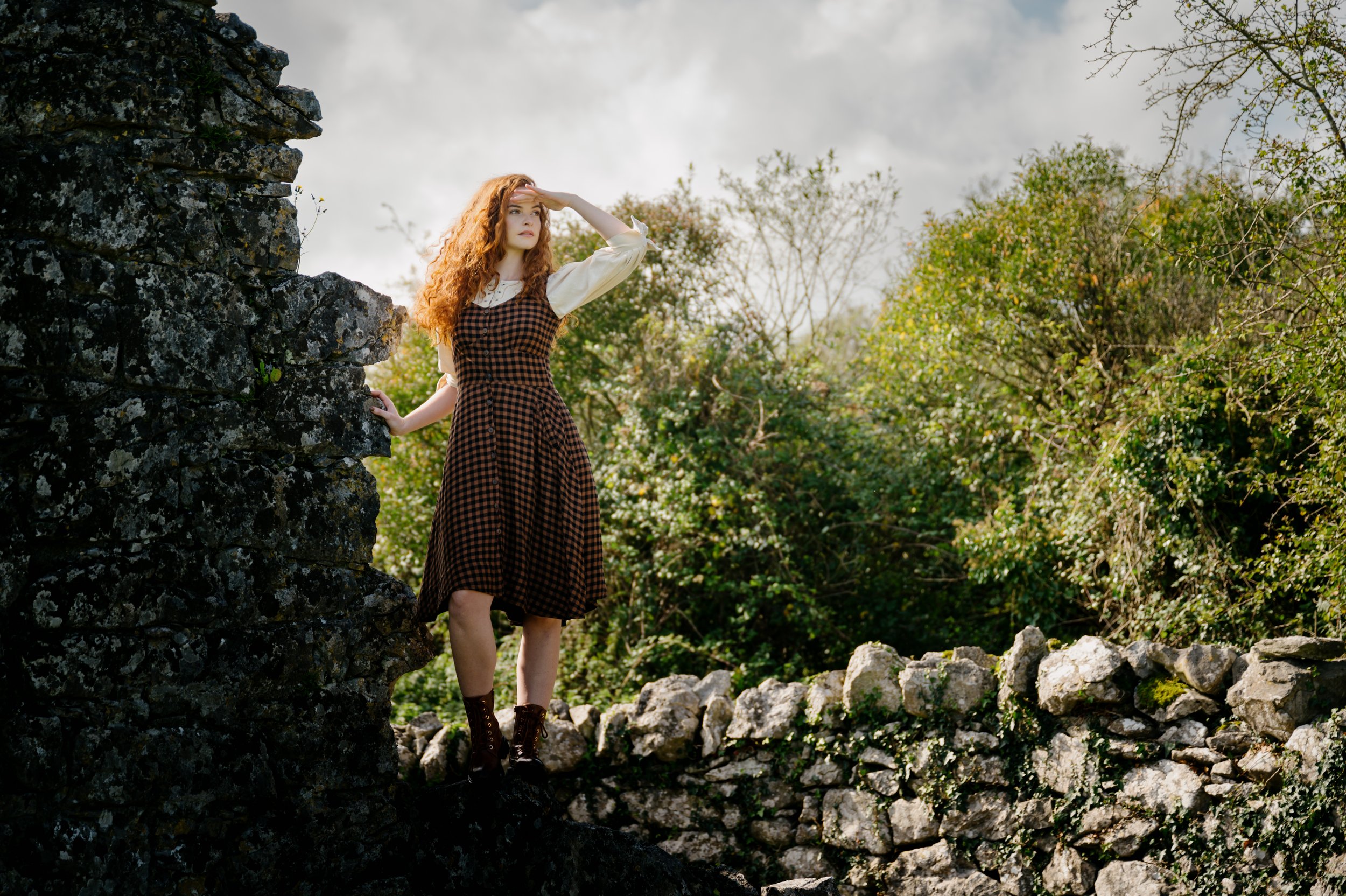Bealtaine - Celebrating the Turning of the Celtic Calendar and the Festival of Uisneach
Celebrating Bealtaine at the Hill of Uisneach in the heart of Ireland, County Westmeath.
Regina is wearing the Dark Knotwork Celtic dress available here: Celtic Dresses
Bealtaine
Bealtaine, also known as Beltane, Beltain, Beltainne, Beltaine, or Beltany, is a traditional Gaelic festival that celebrates the turning in the wheel of the Celtic Calendar signifying the start of summer in the northern hemisphere as we merge from the dark part of the year to the bright half. The festival is celebrated on May 1st through to it’s astrological date May the 5th. Festivities often begin on the evening of April 30th, which is known as May Eve. Bealtaine, the Irish name for the month of May, has the oldest written record of this word known in it’s many forms. The word is composed of two parts: "béal," meaning mouth, and "tine," meaning fire. When combined, they create the evocative phrase "mouth of fire.” Bealtaine is also thought to have been named after the god Bel or Belenus from the Celtic root bel, which means "bright" or "shining."
Celtic calendar designed by Sophie Gavin
Several of Ireland's Celtic festivals have agricultural origins, including Bealtaine. Traditionally, Bealtaine marked the time of year when farmers would lead their livestock to higher elevations for the summer, in search of more fertile grazing land. This practice freed up the land at home for crop cultivation, and the farmers would stay in temporary huts on the hillsides during this time. When the season changed in October, they would return home before Samhain.
Bealtaine has its roots in pre-Christian Celtic mythology, during which time the Celts believed that the veil between the physical world and the spiritual world was at its thinnest. To protect themselves and their livestock from malevolent spirits, piseogs, and fairies, they would perform rituals and bonfires, which remains one of the most significant aspects of Bealtaine. People would gather around the fire to purify themselves, ensure fertility for the upcoming year, and bring good luck to their crops and livestock. Jumping over the bonfire was a common practice, believed to enhance the purification process. Additionally, the ashes from the fire were thought to have healing properties and were used to protect people and animals from harm.
Regina the designer at Celtic fusion is a very skilled fire dancer and will be performing at the festival at the Hill of Uisneach this year on May 6th
Ladies wearing the Wicca dress and the Dark Knotwork dress available here: Celtic Dresses
Celebrations at Uisneach
The lighting of the Bealtaine Fire on the Hill of Uisneach in modern-day County Westmeath is one of Ireland's oldest and most cherished traditions. This special time of year was marked by feasting, drinking, dancing, and community, making it an ideal opportunity to connect with people from neighboring villages. Prior to the lighting of the main bonfire at sunset on May Eve (30th of April) by the High King of Ireland, any smaller fires on the hill would be extinguished. The bonfires from different townlands would then be connected in a network, ultimately connecting to the main bonfire at the "naval" (belly button or center) of Ireland at the Hill of Uisneach.
Today this tradition continues to be celebrated each year at the Hill of Uisneach celebrating Irish Heritage at the heart of Ireland! The Bealtaine celebrations have been revived as one of the key events in the Irish cultural calendar, and a great opportunity for families and communities to come together.
Celebrations at the Hill of Uisneach lighting the bonfire at sunset on May Eve
Maypole & May Queen
In addition to the bonfire, Bealtaine is also associated with the Maypole dance. The Maypole is a tall pole decorated with ribbons and flowers that is erected in the center of a village or town. People then dance around the Maypole, weaving the ribbons together to create a beautiful pattern. The Maypole dance symbolises the fertility of the earth and the renewal of life in spring. Another traditional aspect of Bealtaine is the crowning of the May Queen. The May Queen is usually a young woman who is chosen by the community to represent the goddess of spring and fertility. She is crowned with flowers and leads the Maypole dance and other festivities.
Lira Karina Wedding Dresses
In modern times, Bealtaine is still celebrated in many parts of the world. While some of the traditional rituals have been adapted or replaced by newer traditions, the essence of the festival remains the same - to celebrate the arrival of spring and the renewal of life. If you're interested in celebrating Bealtaine, you can do so by lighting a bonfire, dancing around a Maypole, or simply spending time in nature and appreciating the beauty of spring. Bealtaine is a beautiful and meaningful festival that celebrates the arrival of summer and the renewal of life. Whether you celebrate it in a traditional or modern way, the spirit of Bealtaine can inspire us all to appreciate the beauty of nature and the power of renewal.
Regina in the bluebells wearing the Light Druid Cardigan. More Celtic Coats and cloak for women options here: Cardigans, Coats & Capes
More Celtic style Designs for Men and Women available from our online store here:








